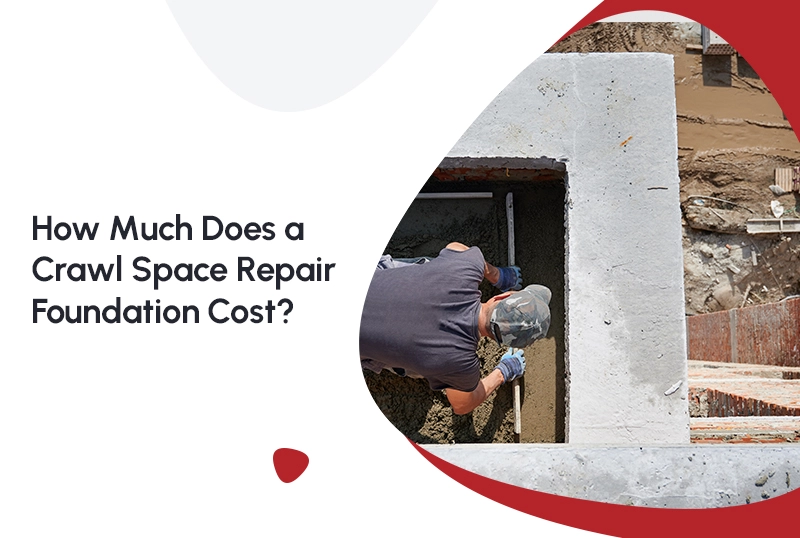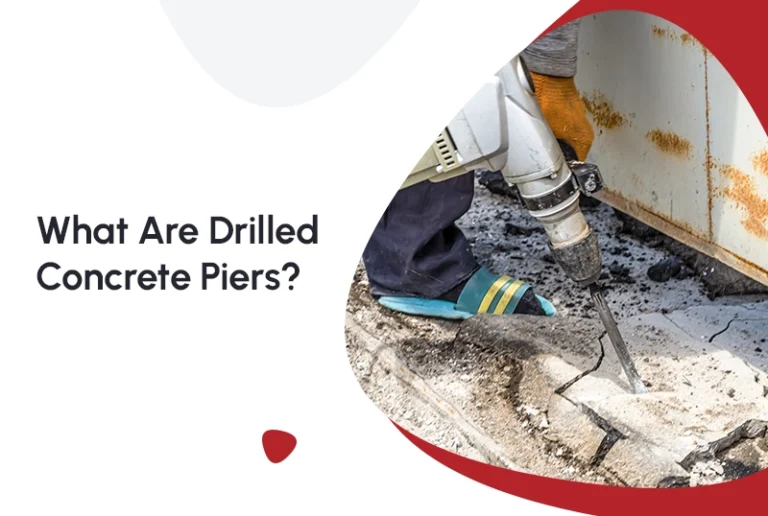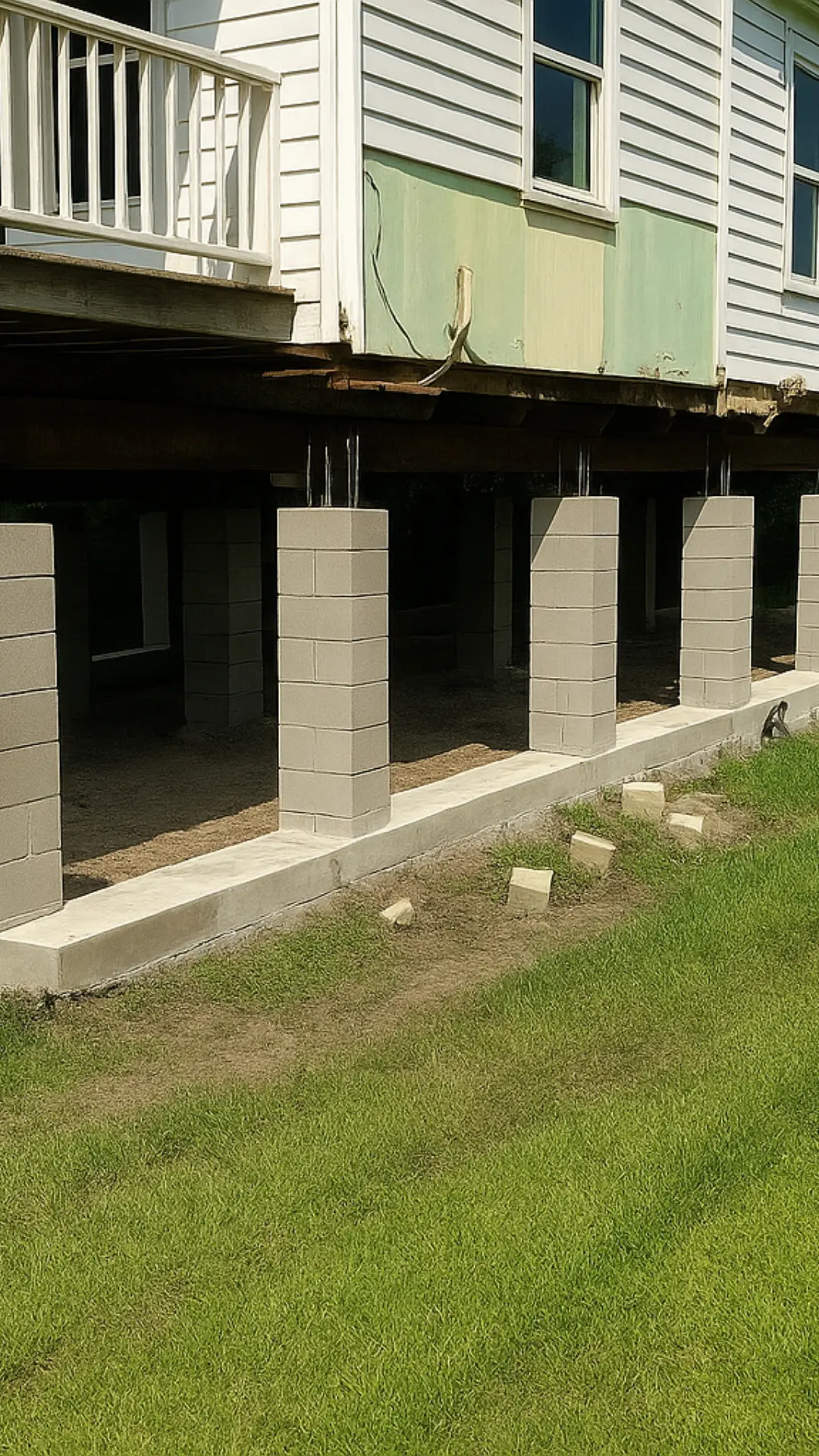If your home has a crawl space and you’ve noticed sagging floors, musty odors, or high humidity levels, there’s a good chance you need crawl space repair. While often overlooked, the crawl space is vital to your home’s structural integrity, indoor air quality, and energy efficiency. When it’s damaged or deteriorating, quick action can prevent more severe issues down the line.
One of the most common concerns homeowners have is: How much does it cost? The answer depends on several factors including damage severity, location, and the specific solutions required. This guide breaks down the costs, available repair methods, and the long-term benefits of investing in professional foundation restoration.
What Is Crawl Space Repair?
Crawl space repair is the process of fixing structural or environmental problems beneath your home’s ground floor. Common issues include wood rot, mold, standing water, pest infestations, and shifting piers or beams. Left unchecked, these problems can cause significant damage to your home’s flooring and foundation system.
The goal of a crawl space repair project is to stabilize the structure, eliminate moisture problems, and create a clean, dry, and usable area. Depending on your home’s construction, especially if you have a Pier & Beam Foundation, your repair options may vary.
Why Is Crawl Space Health So Important?
A crawl space acts as a critical foundation for your home’s structure. If moisture builds up in this area, it can promote mold growth and even weaken the beams and supports. Inadequate moisture control or structural damage in the crawl space can lead to:
- Sagging floors: If moisture affects the beams or piers supporting the floors above, the result can be structural instability.
- Mold growth: High humidity levels are the perfect breeding ground for mold and mildew, affecting the air quality inside your home.
- Pest infestations: An untreated crawl space can attract termites and rodents, both of which can worsen existing foundation issues.
- Higher energy bills: Poor insulation in your crawl space leads to heat loss, causing your HVAC system to work harder and raising your monthly utility costs.
Maintaining crawl space health goes beyond simple repairs—it’s about ensuring the longevity of your home’s structure and keeping energy costs down.
Average Crawl Space Repair Costs in 2025
Repair costs can range widely depending on the nature of the damage and the solutions applied. On average, homeowners spend between $2,500 and $15,000 for complete crawl space repair. Below is a breakdown of common services and their price ranges:
| Service Type | Estimated Cost |
| Crawl Space Encapsulation | $3,000 – $8,000 |
| Vapor Barrier Installation | $1,500 – $4,000 |
| Foundation Support Jack System | $4,000 – $15,000 |
| Crawl Space Insulation Replacement | $1,200 – $3,500 |
| Drainage System Installation | $2,000 – $7,000 |
| Mold Removal & Remediation | $500 – $6,000 |
The total cost depends on how extensive the repairs need to be and how accessible your crawl space is. Homes with existing damage or outdated construction may require additional work, especially when tied into broader Foundation Repair needs.
What Factors Influence Crawl Space Repair Pricing?
Several key factors influence the final price of your crawl space repair:
1. Extent of the Damage
Minor water damage or a small mold issue will cost far less than sagging joists or failing foundation supports. Significant foundation damage, such as cracked or shifted piers, will require more specialized equipment and techniques, resulting in a higher cost.
2. Size and Access
A larger crawl space or one that is hard to access (less than 24 inches of clearance) will typically require more labor and time, increasing the cost. In some cases, additional tools or equipment like specialized ladders or cameras may be needed to inspect and repair the area.
3. Soil Type and Drainage Conditions
Wet or clay-heavy soil can worsen structural problems, making repairs more expensive. In these cases, adding Concrete Leveling to stabilize the soil under your crawl space may be necessary, as improper soil compaction can make future repairs costly.
4. Repair Method Chosen
Simple fixes like vapor barriers cost less, while full encapsulation or pier and beam restoration can run into the thousands. Encapsulation is a more comprehensive approach to preventing moisture but comes with a higher upfront cost.
5. Age of the Home
Older homes, particularly those with a Concrete Slab Foundation, may need more comprehensive upgrades or retrofitting to meet modern standards. The older the home, the more likely it is that additional work such as foundation leveling or upgrading drainage systems will be required.
Common Crawl Space Repair Solutions
Here are some of the most effective and widely used methods for repairing crawl spaces:
Crawl Space Encapsulation
This involves sealing the crawl space with a heavy-duty plastic liner and installing a dehumidifier to prevent moisture buildup. It’s a popular long-term solution for homes in humid climates, effectively controlling moisture and air quality.
Vapor Barrier Installation
A vapor barrier is a cost-effective option that reduces ground moisture from entering the crawl space. It’s ideal for less severe moisture problems and can be installed quickly to provide immediate relief.
Support Pier and Beam Reinforcement
For homes with Pier & Beam Foundation Repair needs, jacking systems or additional piers are added to lift and level the structure. This restores stability to floors and corrects sagging issues.
Drainage and Sump Pump Systems
For crawl spaces with water pooling or flooding issues, a perimeter drainage system paired with a sump pump can direct water away and keep the space dry.
Concrete Leveling
If the crawl space has settled or the foundation has shifted, Concrete Leveling helps reestablish a stable and even support system beneath your home, ensuring the integrity of the structure.
Why Ignoring Crawl Space Issues Costs You More
It might be tempting to ignore crawl space problems—after all, it’s not an area you see every day. But untreated moisture or structural issues can lead to:
- Floor warping and instability: Moisture can compromise the wood and metal supports in your crawl space, leading to warped floors that are uneven and difficult to repair.
- Mold growth that affects indoor air quality: Mold and mildew can spread rapidly, causing serious respiratory issues for the family and deteriorating materials.
- Pest infestations: Crawl spaces are ideal homes for pests. Termites, rodents, and insects can cause more damage to the structure and can be expensive to eradicate.
- Higher heating and cooling bills: Poor insulation and airflow issues can lead to an increase in your heating and cooling expenses.
- Expensive foundation repair needs later on: Unaddressed issues often lead to more severe structural damage over time, which may result in costly repairs or even full foundation replacement.
Addressing crawl space problems early means you’ll spend less money and avoid larger-scale structural repairs in the future.
Is Crawl Space Repair a DIY Job?
Small issues like cleaning or installing a vapor barrier might be manageable for an experienced DIYer. However, most crawl space repairs require professional assessment and engineering-level solutions.
Specialized tools, materials, and safety precautions are necessary, particularly when dealing with foundation jacks, mold remediation, or full encapsulation. Hiring a professional like FNF Foundation ensures your home’s structure remains safe and compliant with local building codes.
How to Choose the Right Contractor for Crawl Space Repair
Not all contractors have the experience or credentials to perform effective crawl space repair. Here’s what to look for:
- Licensed and insured with crawl space and foundation repair experience
- Offers free inspections and written estimates
- Provides clear, honest breakdowns of costs and repair options
- Uses quality materials with warranties
- Has strong reviews and local credibility
FNF Foundation meets all these standards, delivering trusted crawl space repair services that restore your home’s integrity and value.
Crawl Space Repair and Your Home’s Value
Beyond preventing damage, crawl space repair can also enhance your property’s resale value. Homebuyers are increasingly aware of the importance of a dry, stable foundation. Encapsulation, structural reinforcements, and moisture control systems show prospective buyers that your home is well-maintained and energy-efficient.
Conclusion
Crawl space repair may seem like an unnecessary expense—until you see what happens when it’s ignored. From wood rot to mold and serious structural issues, what lies beneath your home matters more than you might think.
Investing in professional repairs today not only increases your home’s value but protects it from future damage. Whether you’re dealing with sagging floors, high humidity, or drainage problems, FNF Foundation has the expertise to deliver lasting solutions.
FAQs (Frequently Asked Question)
1. What is crawl space repair?
Crawl space repair involves addressing issues within the crawl space beneath a home, such as foundation cracks, water damage, poor ventilation, or mold growth. Common repairs include encapsulation (sealing off the crawl space to prevent moisture), foundation stabilization, and installing vapor barriers to protect against moisture. Proper maintenance and repairs ensure the integrity of the structure, improve air quality, and prevent costly damage to plumbing or electrical systems.
2. Can you renovate a crawl space?
Yes, you can renovate a crawl space, especially to enhance its functionality, prevent moisture damage, and improve air quality. Renovating may include encapsulation to seal the space, installing proper drainage systems to prevent flooding, and insulating the area to improve energy efficiency. Depending on the level of renovation, you can also add dehumidifiers or air circulation systems to prevent mold growth.
3. What is the best treatment for a crawl space?
The best treatment for a crawl space involves encapsulation, which seals the area to keep moisture out and protect it from mold, pests, and air quality issues. Additionally, installing a vapor barrier and insulation can prevent temperature fluctuations, while dehumidifiers can control humidity levels. Proper drainage and regular inspections are essential to maintaining the health of the crawl space.
4. How much does a crawl space retention cost?
The cost of a crawl space retention or repair varies widely depending on factors like the extent of damage, size of the space, and type of repairs needed. On average, it can cost anywhere from $1,500 to $15,000 for encapsulation, moisture control, and foundation stabilization. The total cost will depend on whether you’re addressing minor issues like mold and insulation, or performing major repairs such as leveling or installing a full vapor barrier system.
5. How long does it take to fix a crawl space?
Fixing a crawl space typically takes between 1 to 5 days, depending on the complexity of the repairs. Simple tasks like installing vapor barriers or repairing minor leaks may take just one day. However, more extensive repairs such as encapsulation, foundation stabilization, or waterproofing may take longer. A full renovation may require additional time for drying and setting materials.
6. Where is the crawl space in a house?
The crawl space in a house is located beneath the ground floor, between the foundation and the first floor. It is typically accessed through a hatch or small door in the floor or outside the house. The crawl space serves as a gap to house plumbing, wiring, and HVAC systems, and provides space for air circulation. It is usually no more than 18-24 inches in height, making it difficult to access and work in.
7. How do I know if my house has a crawl space?
You can tell if your house has a crawl space by checking the height of the first floor. If the home sits on a raised foundation with a gap beneath the structure, it likely has a crawl space. Access points are often found in the form of a small door or vent on the outside of the house. If you’re unsure, a home inspector can confirm the presence of a crawl space by checking the foundation type or by entering the area through the access point.
8. What are the disadvantages of a crawl space?
Crawl spaces can have several disadvantages, such as:
- Moisture buildup leading to mold, mildew, and wood rot.
- Poor air quality that can affect the home’s indoor air.
- Pest infestations from rodents or insects.
- Access issues since the space is often cramped and difficult to maintain.
- Increased energy bills due to poor insulation and temperature fluctuations.
With proper maintenance, many of these issues can be mitigated.
9. Is it possible to finish a crawl space?
Yes, it is possible to finish a crawl space by encapsulating it, insulating the walls and floor, and adding proper ventilation or air circulation. Finishing the crawl space increases usable space, improves energy efficiency, and prevents moisture buildup. Some homeowners even choose to use finished crawl spaces for storage or as extra living space. However, it’s important to address moisture issues first to avoid mold and mildew growth.
10. Can I put new concrete on top of old concrete?
Yes, you can put new concrete on top of old concrete, but proper preparation is crucial. The surface must be cleaned, free of debris, and roughened to ensure proper bonding between the old and new layers. If the existing concrete is cracked or uneven, repairs or leveling should be done before adding the new layer. A bonding agent may also be applied to improve adhesion and prevent separation between the two layers.







